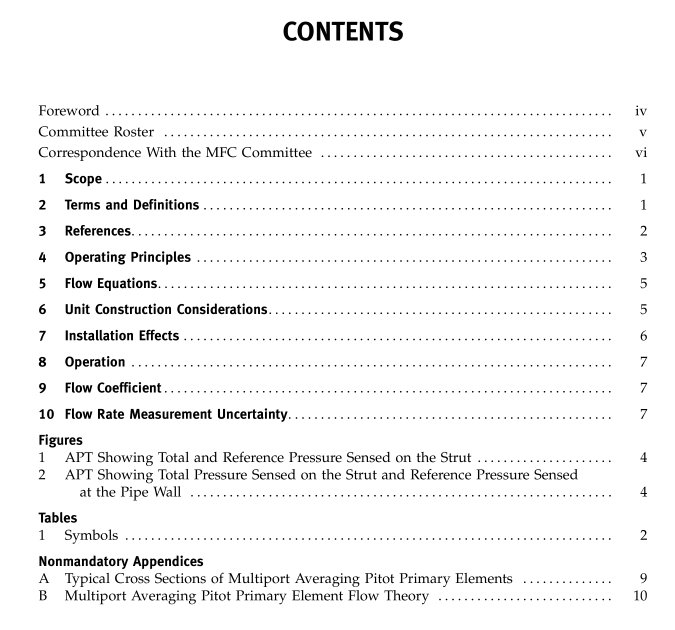ASME MFC-12M pdf download

ASME MFC-12M pdf download Measurement of Fluid Flow in Closed Conduits Using Multiport Averaging Pitot Primary Elements
1 SCOPE This Standard, provides information on the use of multiport averaging Pitot head-type devices used to measure liquids and gases. The Standard applies when the conduits are full and the flow
(a) has a fully developed profile
(b) remains subsonic throughout the measurement section
(c) is steady or varies only slowly with time (d) is considered single-phase A differential pressure transmitter or other pressure measuring device, known as a secondary element, must be used with a multiport averaging Pitot primary ele- ment to produce a flow rate measurement. Although multiport averaging Pitot primary elements are sometimes used in noncircular conduits, such appli- cations are beyond the scope of this Standard.
2 TERMS AND DEFINITIONS The terminology and symbols (Table 1) used in this Standard are in accordance with ASME MFC-1M. Some items from ASME MFC-1M are listed in para.
2.2.1 for easier reference. Terminology not defined in ASME MFC-1M, but used in this Standard, are defined in para.
2.1 Symbols See Table 1.
2.2 Definitions
2.2.1 Definitions Found in ASME MFC-1M cavitation: the implosion of vapor bubbles formed after flashing when the local pressure rises above the vapor pressure of the liquid. See also flashing. differential pressure device: device inserted in a pipe to create a pressure differential whose measurement, together with a knowledge of the fluid conditions and of the geometry of the device and the pipe, enables the flow rate to be calculated.
flashing: the formation of vapor bubbles in a liquid when the local pressure falls to or below the vapor pressure of the liquid, often due to local lowering of pressure because of an increase in the liquid velocity. See also cavitation. primary device (ofa differential pressure device): differential pressure device with its pressure tappings.
rangeability: flowmeter rangeability is the ratio of the maximum to minimum flowrates or Reynolds number in the range over which the primary element meets a specified uncertainty (accuracy).
reproducibility: the closeness of agreement between results obtained when the conditions of measurement differ; for example, with respect to different test appara- tus, operators, facilities, time intervals, etc. Reynolds number: a dimensionless parameter expressing the ratio between inertia and viscous forces. It is given by the formula









